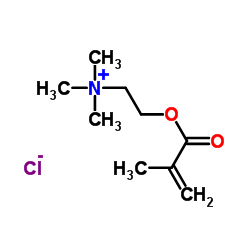| Structure | Name/CAS No. | Articles |
|---|---|---|
 |
Methacrylatoethyl trimethyl ammonium chloride
CAS:5039-78-1 |
| Structure | Name/CAS No. | Articles |
|---|---|---|
 |
Methacrylatoethyl trimethyl ammonium chloride
CAS:5039-78-1 |